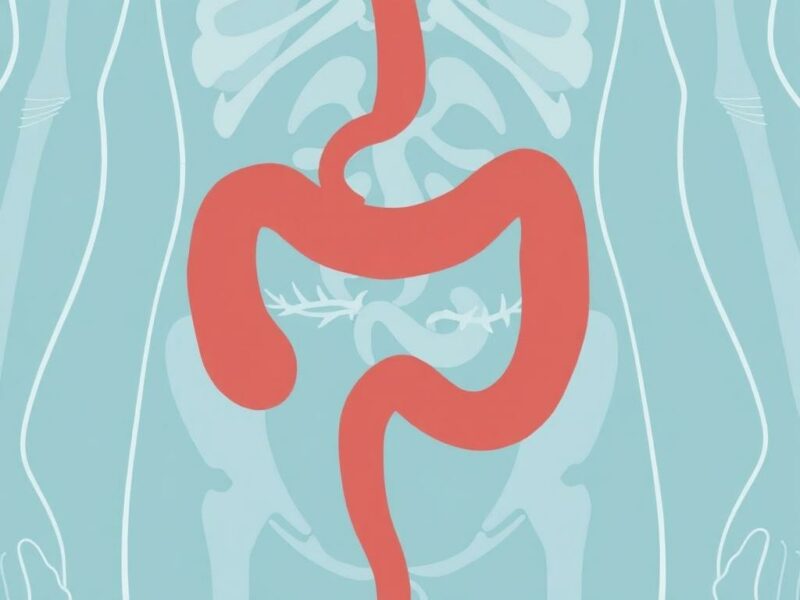Appendicitis is one of those medical conditions that instantly makes most people think about surgery. After all, the standard treatment for appendicitis has been an appendectomy—removal of the appendix—for over a century. But what if surgery isn’t the only option? Can appendicitis be treated without going under the knife? It’s a question that’s both intriguing and important, especially for people who fear surgery or want to avoid hospital stays. In this article, we’ll explore the possibilities of treating appendicitis without surgery, unpack the science behind it, and discuss the risks and benefits involved. Ready to dive in? Let’s unravel the fascinating story of appendicitis treatment beyond the operating room.
Understanding Appendicitis: What Happens in Your Body
To begin, it’s essential to understand what appendicitis is and why surgery has been the traditional route for its treatment. Appendicitis occurs when the appendix, a small, tube-like structure attached to your large intestine, becomes inflamed due to blockage or infection. This inflammation causes intense pain, usually starting near the belly button and shifting to the lower right abdomen. Along with pain, symptoms include nausea, vomiting, fever, and loss of appetite.
If untreated, an inflamed appendix can burst, releasing harmful bacteria into the abdominal cavity, which can lead to peritonitis—a serious, potentially fatal infection. This risk is why surgery has been the go-to treatment. Removing the appendix stops the infection and prevents rupture.
However, with advances in medicine, non-surgical approaches are emerging as possible alternatives. But how effective and safe are these approaches? Let’s dig deeper.
Traditional Treatment: Surgery and Why It’s Preferred
Though it might sound intimidating, appendectomy is a relatively quick and common surgery, performed laparoscopically or as an open surgery. The surgeon removes the appendix before it can rupture. The benefits of surgery include a definitive resolution of the problem, reduced risk of recurrence, and prevention of complications such as abscess or peritonitis. Most patients recover rapidly, with minimal hospital stays and discomfort.
Still, surgery comes with risks of anesthesia, infection, bleeding, and longer recovery especially for older adults or those with other health problems. Additionally, surgery isn’t always immediately available in remote or resource-limited areas.
These factors have motivated researchers and clinicians to investigate if some cases of appendicitis can be managed without surgery.
Can Appendicitis Resolve Without Surgery?
Interestingly, appendicitis may not always proceed to complications. Some mild or early cases of appendicitis can improve with conservative treatment, meaning without surgery. This usually involves antibiotics, rest, and close monitoring.
It’s important to understand that not all appendicitis cases are alike. There are two main types:
- Uncomplicated appendicitis: no rupture, abscess, or widespread infection.
- Complicated appendicitis: involves rupture, abscess formation, or widespread infection.
For uncomplicated appendicitis, recent studies suggest that antibiotics alone can sometimes be enough to reduce inflammation and fight infection. The idea is that the appendix can heal itself if the infection is controlled early.
Antibiotic Treatment for Appendicitis: How Does It Work?

Instead of immediate surgery, the patient receives intravenous or oral antibiotics aimed at clearing the infection. The antibiotic approach includes a course of broad-spectrum antibiotics covering common bacteria found in the gut.
Patients are closely monitored for signs of worsening condition—persistent pain, fever, elevated white blood cell counts, or imaging findings indicating abscess or perforation.
In many cases, symptoms improve significantly within 24-48 hours, and patients avoid surgery safely. This treatment needs follow-up scans or consultations to ensure healing and check for recurrence.
Success Rates and Limitations
Various clinical trials and meta-analyses have reported success rates for antibiotic-only treatment ranging from 60% to 85%, meaning 60 to 85% of patients avoid surgery during initial treatment.
However, one important consideration is the chance of recurrence. About 20-30% of patients treated with antibiotics may experience another episode of appendicitis within a year, some of which require surgery later.
Therefore, antibiotic treatment is generally considered for carefully selected patients with uncomplicated appendicitis, informed of the risks and benefits.
Who Can Benefit from Non-surgical Treatment of Appendicitis?

Not all patients are candidates for antibiotic-only treatment. Factors influencing eligibility include:
| Criteria | Explanation |
|---|---|
| Type of appendicitis | Uncomplicated appendicitis without perforation or abscess |
| Symptom severity | Mild to moderate pain manageable with medication |
| Age and health status | Often younger, otherwise healthy adults |
| Access to medical care | Ability to monitor symptoms and seek surgery if needed |
| Patient preference | Willingness to accept risk of recurrence and follow-up |
Patients with complicated appendicitis, signs of rupture, or worsening infection typically require surgery immediately.
Emerging Treatments and Innovations
Beyond antibiotics, some researchers are exploring other methods for treating appendicitis non-surgically. These include:
- Percutaneous drainage: For appendiceal abscesses, draining fluid collections with a needle guided by ultrasound can reduce infection before or instead of surgery.
- Watchful waiting: In very mild or uncertain cases, doctors may monitor closely for symptom progression before deciding on interventions.
- Probiotics and diet: Experimental approaches to reduce gut inflammation and support recovery.
While promising, these are not widely established yet, and more research is ongoing.
The Risks of Avoiding Surgery
Choosing to treat appendicitis without surgery isn’t without risks. The biggest concerns include:
- Missed complications: Appendicitis can progress quickly to rupture, increasing death’s risk if delayed surgery is necessary.
- Recurrence: As mentioned, the infection can come back even after successful antibiotic treatment.
- Diagnostic uncertainty: Sometimes what looks like appendicitis could be other abdominal issues requiring surgery.
Close medical supervision is essential to mitigate these risks.
What Do the Experts Say?
Medical organizations and expert panels have begun recognizing antibiotic therapy as an option in uncomplicated appendicitis cases, but with caution. For example, the American College of Surgeons still generally recommend surgery but support shared decision-making involving patient preferences.
Research continues to refine patient selection criteria, antibiotic regimens, and follow-up protocols. This is a dynamic field, and guidelines may evolve.
How to Decide: Surgery or No Surgery?
If you or someone you love is diagnosed with appendicitis, the decision between surgery and non-surgical management can feel overwhelming. Here are some steps to guide the process:
- Get a proper diagnosis: Confirm appendicitis with blood tests and imaging like ultrasound or CT scan.
- Understand the type: Is it uncomplicated or complicated appendicitis? This affects options.
- Discuss with your doctor: Talk about the risks, benefits, and your preferences.
- Consider your situation: Access to emergency care, general health, anxiety about surgery.
- Follow medical advice: If opting for antibiotics, follow up regularly and be vigilant about symptom changes.
Real-Life Stories: Appendicitis Treated Without Surgery
Many patients have successfully managed appendicitis without surgery. For example, Sarah, a 28-year-old teacher, was diagnosed with uncomplicated appendicitis. Her doctor recommended an initial round of IV antibiotics, which resolved her pain and infection. While she was aware of the recurrence possibility, she appreciated avoiding surgery and had regular check-ups. A year later, she remains symptom-free.
Stories like Sarah’s are becoming more common as awareness of non-surgical options grows.
Summary of Appendicitis Treatment Options
To clarify the options, here is a summary table:
| Treatment | Description | Pros | Cons |
|---|---|---|---|
| Surgery (Appendectomy) | Removal of the inflamed appendix | Definitive treatment, low recurrence risk | Risks of anesthesia, recovery time, surgical complications |
| Antibiotics Alone | Intravenous and oral antibiotics to control infection | Avoids surgery, faster recovery initially | Risk of recurrence, requires close monitoring |
| Percutaneous Drainage | Needle drainage of abscess if present | Reduces infection before or instead of surgery | Not suitable for all cases, requires imaging guidance |
| Watchful Waiting | Close monitoring before intervention | Avoids unnecessary treatment in uncertain cases | Risk of sudden worsening, requires prompt medical access |
Tips for Appendicitis Prevention
While what causes appendicitis isn’t fully understood, certain lifestyle habits may lower your risk or prepare you better for any health issues:
- Maintain a high-fiber diet to prevent bowel obstruction.
- Stay hydrated and practice good hygiene to reduce infections.
- Seek early medical attention with abdominal pain to avoid complications.
- Stay informed about your health options, including non-surgical treatments.
Looking Forward: The Future of Appendicitis Treatment
Medical science is always evolving. The future may bring:
- Improved diagnostic tools to distinguish types of appendicitis quickly.
- Targeted antibiotics or therapies tailored to individual infections.
- Minimally invasive procedures that avoid full surgery.
- Better patient education to empower shared decision-making.
As we learn more, the question “appendicitis without surgery: is it possible?” may shift from curiosity to a standard option in many cases.
Conclusion
So, can you have appendicitis without surgery? The answer is increasingly yes—but with important caveats. For uncomplicated appendicitis, antibiotic therapy offers a feasible alternative to surgery, sparing some patients the risks and recovery associated with the operating room. However, this approach requires careful evaluation, patient selection, and close medical follow-up to ensure safety and address any risk of recurrence or complications. Surgery remains the gold standard, especially for complicated cases or when infection worsens. The decision between surgery and non-surgical treatment depends on multiple factors, including the severity of the appendicitis, patient health, preferences, and access to care. As research progresses, non-surgical options will become better defined and more widely available, offering patients a broader range of choices in managing this common condition. The key takeaway? Appendicitis doesn’t always mean surgery, but medical guidance and vigilance are essential to navigate this path safely.



